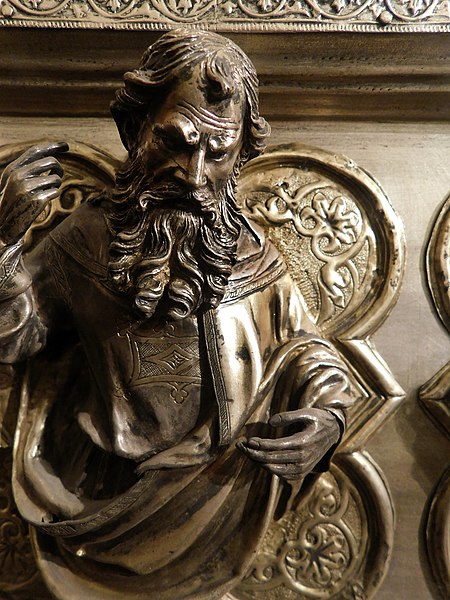An egg of Columbus or Columbus's egg refers to a brilliant idea or discovery that seems simple or easy after the fact. The expression refers to an apocryphal story, dating from at least the 16th century, in which it is said that Christopher Columbus, having been told that finding a new trade route was inevitable and no great accomplishment, challenges his critics to make an egg stand on its tip. After his challengers give up, Columbus does it himself by tapping the egg on the table to flatten its tip.
Columbus Breaking the Egg by William Hogarth
Columbi ägg (1924) by the Swedish artist Nils von Dardel
Monument to the discovery of America by Columbus in the shape of an egg in Sant Antoni de Portmany, Ibiza, Spain
Filippo di ser Brunellesco di Lippo Lapi, commonly known as Filippo Brunelleschi and also nicknamed Pippo by Leon Battista Alberti, was an Italian architect, designer, goldsmith and sculptor. He is considered to be a founding father of Renaissance architecture. He is recognized as the first modern engineer, planner, and sole construction supervisor. In 1421, Brunelleschi became the first person to receive a patent in the Western world. He is most famous for designing the dome of the Florence Cathedral, and for the mathematical technique of linear perspective in art which governed pictorial depictions of space until the late 19th century and influenced the rise of modern science. His accomplishments also include other architectural works, sculpture, mathematics, engineering, and ship design. Most surviving works can be found in Florence.
Anonymous portrait from the 2nd half of the 15th century (Louvre, Paris)
The Santa Maria del Fiore cathedral in Florence possesses the largest brick dome in the world, and is considered a masterpiece of European architecture.
St. John the Evangelist, Altar of Saint at Church of San Zeno, Pistoia (1399–1400)
Prophet Jeremiah detail of altarpiece, Church of San Zeno, Pistoia (1399–1400)







